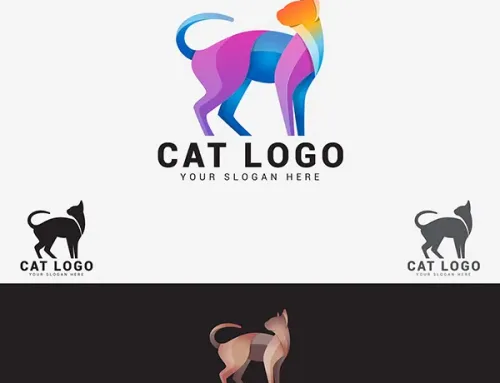Branding vs. Marketing: The Ultimate Showdown
Have you ever seen a brand without any marketing strategies? Or any marketing strategy that is not associated with any company or brand? No, right? This is because branding and marketing work hand in hand. However, what is more important in a branding vs. marketing duel, and how can you use both to fuel your company’s growth? Is there a way to combine them to maximize their benefits?


Yeah. This blog is the answer to your all sorts of nitty-gritty queries. We explored how to distinguish between the two terms, looked into their special meanings, and included brand stories to provide you with a wealth of inspiration. Guess what this is about! Keep your eyeballs rolling to get there!
Branding vs. Marketing: The textbook definitions
For your convenience, we are going to provide simple overviews of branding and marketing here. This segment will help you understand the fundamental differences between the two.
What is branding
The concept of branding is making powerful emotional connections with consumers when they come across your startup or business.
Basically, branding is all about starting with an idea and seeing it through to the end. The entire branding process conveys your brand message, values, brand image, and product or service details to potential customers. In addition, branding becomes successful when you share your behind-the-scenes stories of people’s experiences, along with the company’s fundamental purpose.
What is marketing ?
Marketing refers to the necessary steps or activities a brand or company uses to boost sales. An effective marketing technique involves conducting promotional efforts to sell services and products to a real target audience.
Branding vs. Marketing: Learn the differences
It may seem like branding and marketing are synonymous words, but they have different purposes and strategies. Let us show you the essential differences between them.
Unique voices
When people hear the brand’s voice, they are reminded of the brand. Marketing messages, on the other hand, include product features and promotional details.
Various brands use branding messages to appeal to different emotions in their target audiences. For instance, brand messaging from Apple products makes you feel like you’re living on top of the line.
However, the main goal of marketing is to make consumers feel like they need to act quickly. Some common advertising slogans are “sale ending soon” and “grab your master copy now; this is the last discount offer of the year.” Yes, that is the purpose of marketing—presenting your products or services according to your pain points.
Differences in design schemes
Designing a brand’s logo, colors, and identity as a whole is what branding is all about. To learn more about this topic, hop on to our recent blog on Branding design: Learn about the 4 core elements.
Designing marketing elements involves considering the branding design, layout formats, and content required to create a pleasant user experience. Websites and social media content are all also part of marketing design.
Variations in metrics and measures
Branding metrics encompass all three concepts—brand building, brand awareness, and brand loyalty.
Conversely, marketing metrics assess how various marketing approaches influence customers’ choices. They also show detailed information like website traffic, conversion rate, sales percentage, click-through rate, and enhanced content engagement.
Difference according to the duration
Branding and marketing exist on very separate timelines. If you want your brand’s image or identity to last, you must ensure it stays noticeable. The ideal time frame for branding may range from five to ten years.
And marketing campaigns are shorter, as their format can change depending on current trends, customer demands, product launches, and other aspects. Usually, marketing campaigns or events last several weeks to several months.
Branding vs. Marketing: An Overview of Strategies from Both Fields
As we already discussed the core differences between branding and marketing, there is another method for identifying the distinct development of both areas. Here are a few branding and marketing approaches to get you started:
Branding strategies
Innovative branding
Most brands deliver a message about their innovation in solving customers’ pain points. This strategy helps the brand focus on introducing beneficial and novel ideas to its customers.
Corporate branding
Another part of the branding strategy is keeping the company’s culture alive. In this case, the brand focuses on the company’s values and objectives.
Emotional branding
Nowadays, most food, apparel, and skin care brands use emotional branding. Claims like “cruelty-free,” “vegan,” “free from harmful chemicals,” “diet-friendly,” and “low calorie” are common among these brands. The main goal of mentioning these terms is to draw attention to the customer’s emotional needs. This is one of the best ways for a brand to promote itself.
Growth branding
Lastly, a popular branding concept is growth branding, which involves examining a brand’s past product performance. This method demonstrates how the brand has improved its products throughout the years to gain consumers’ trust.
Marketing strategies
Social media marketing
Social media marketing is an ongoing trendy marketing strategy to put a brand in the spotlight. In this era of social media dominance, proper marketing techniques can scale up startups and support entrepreneurs significantly. The proof is that 96% of SMBs now use social media as a marketing tool, and their visibility and traffic are shooting up. This includes the strategies below:
- Social media content creation
- Page boosting
- Social media campaign
- Online conferences
- Live streaming of products and services
- Creating a customer-centric community platform
Email marketing
Established businesses use email marketing to reach their customers on personal levels. When consumers sign up for a service or visit a website, the company or brand informs them about new offerings, upcoming events, product usage guides, and more.
Content marketing
Content is king—you’ve probably encountered this expression while scrolling through your social media feed. While social media content creation is a part of content marketing, this section is quite diverse.
A content marketing system might include online and offline components, such as creating blogs, YouTube channels, newsletters, posters, billboards, eBooks about products and services, promos, white papers, etc.
A blend of branding and marketing: Omega x Swatch collaboration
In mid-2021, the journey to revolutionary collaboration began when Omega and Swatch sat down to decide on a joint mission. Unlike Omega, a high-end brand known for professional timepieces, Swatch is well-known for its cheerful, street-styled range of watches.
However, the union of both brands produced a supreme blend of luxury elements and casual Gen Z style. The fusion of both brands brought about the ultimate bioceramic MoonSwatch collection. Swatch secured a patent for the bioceramic material used in this series. Furthermore, the design was influenced by the classic Omega Speedmaster Moon watch.


Photo Credit: Pixabay/ lulek41
Now, here we go! We witnessed a remarkable demonstration of innovative branding and marketing strategies intended for the same target audience. To clarify, this joint mission aimed to introduce some lavish designer timepieces within budget to today’s generation.
This is because most new-generation members have limited budgets for luxury brands such as Omega, Rolex, etc. This space-inspired designer watch collection from both brands made it to the general crowd, and that was a bang! Here’s what Omega’s President and CEO, Mr. Raynald Aeschlimann, had to say:
“The Swatches are perfect for budding Moonwatch fans and I can’t think of a more appropriate icon for our shared project.”
Omega wanted to promote itself to the masses, while Swatch got to use the Omega branding tag. That was a win-win situation for both parties. And that’s what we get—a compelling illustration of excellent branding and marketing strategies!
Before we go…
Branding and marketing belong to the same territory, emphasizing different and diverse identities. When a company is just starting out, it is crucial to simplify both procedures. We understand that combining these routes can be somewhat overwhelming when managing multiple tasks simultaneously.
Hence, we recommend you do your research and take the lead before using both to your advantage. This is because ignoring either of these two can result in significant setbacks in your company’s development. In any case, this blog will be a useful starting point for you. Stay tuned for more business and branding-related blogs from Fotomasking!
References
Captera.com, OmegaWatch, Swatch.com, Bluecorona




